Swift by name, swift by nature. If you watch textile artist Dionne Swift practising her free motion machine stitching, the first thing you notice is her speed. Dionne is a master of machine stitch and what’s more, she does it with gusto.
Dionne is well known for her colourful, richly stitched embroideries that impart vitality and energy – artworks based on scenes in nature and her beloved village of Tornareccio in Abruzzo, central Italy where she often goes to teach.
We often talk about painting with thread, but drawing with thread most accurately describes the intention behind Dionne’s machine stitching. Dionne’s focus is on the importance of drawing as preparation for stitching. It’s her way of closely observing what she wants to stitch and it gives her direction. In her own words, ‘the stitch can’t happen without the drawing’.
As Dionne’s work develops, she continues to communicate with us, through her abstract expressionist thread paintings of lines, blocks and colours, the places in nature that lie deep within her heart.
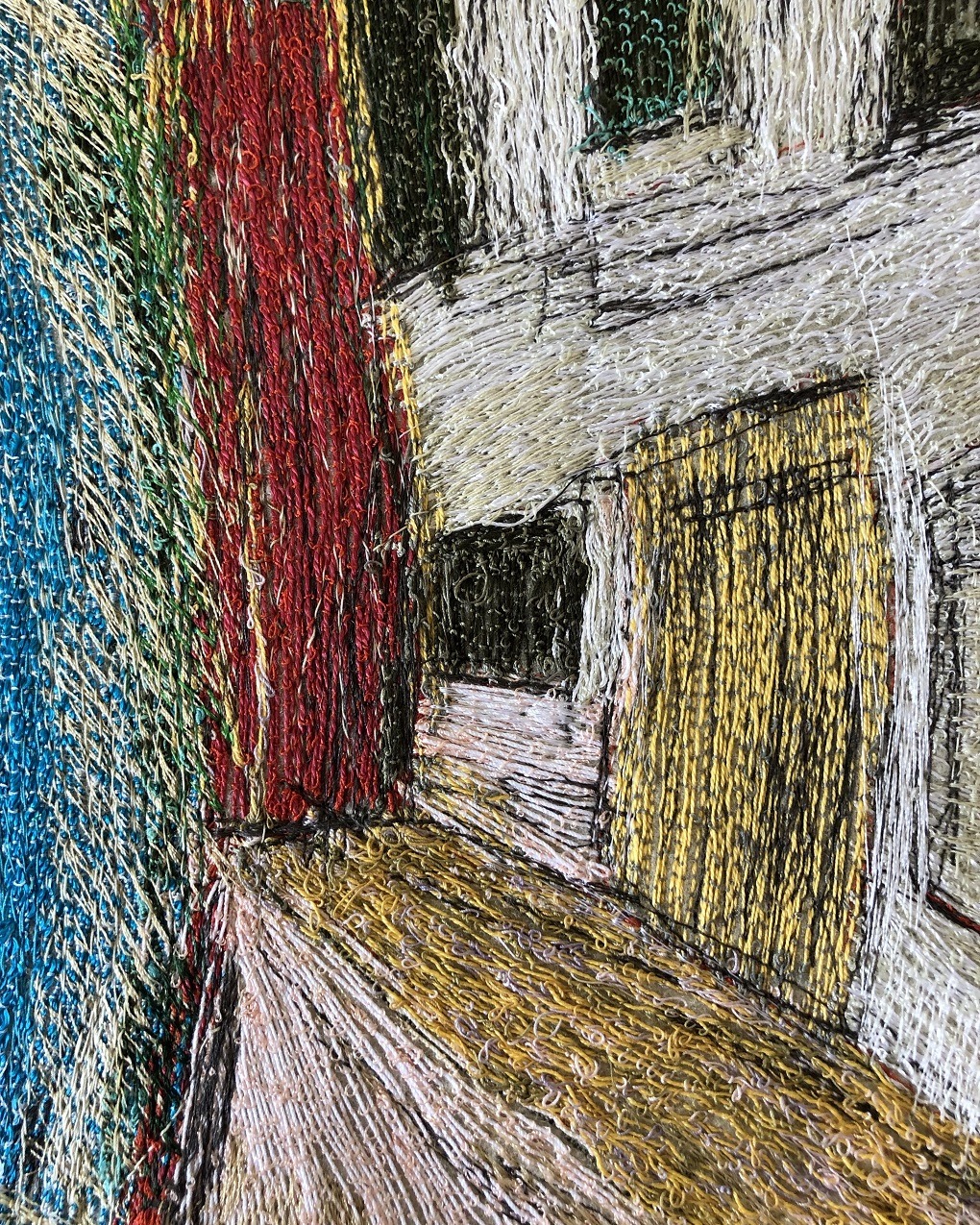
Building a career
Dionne Swift: I’ve been a practising textile artist, and have been teaching for almost 35 years. These days I split my time between Holmfirth in Yorkshire, UK and Abruzzo in central Italy.
I came to textiles through my two grandmothers. Gran Inglis lived in Glasgow – she was an aran knitter. She never followed a knitting pattern, she just kind of made it up as she went along. Gran Millar smocked and embroidered by hand – she was a good dressmaker and made most of my dresses as I was growing up. When I was about 10 or 11 years old I went with Gran to select a pattern to make a pair of shorts. I chose a tricky Vogue style with inset pockets and a fly zip! She set me up and left me to it, waiting in the living room in case I needed any help.
I followed the steps a bit at a time and, hey presto, in an afternoon I’d made my first garment. That level of independence was so empowering at that young age and it inspired an eclectic homemade teenage wardrobe.
Dionne Swift, Textile artist
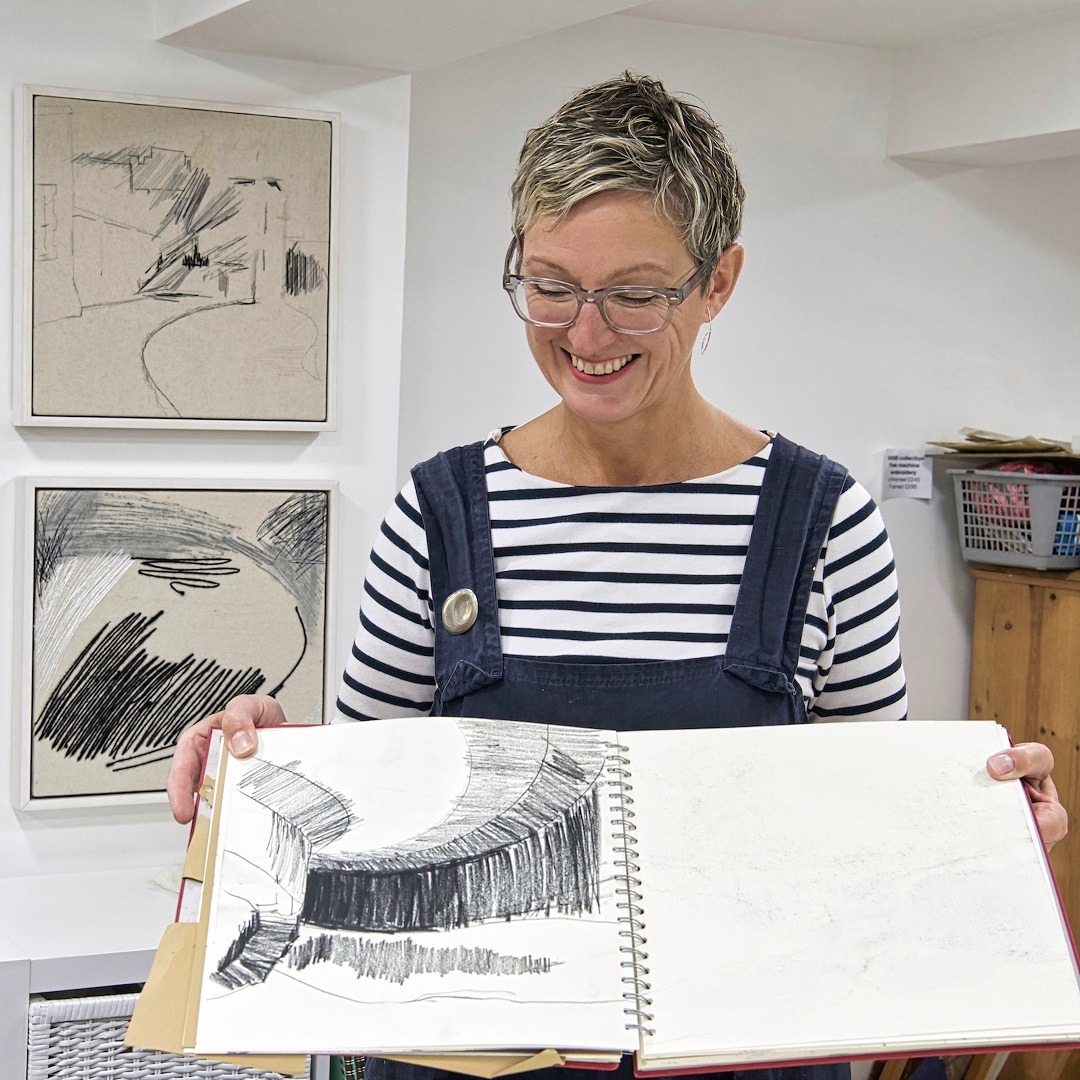
I was pretty academic at school but found my niche after A-levels when I went to study a Foundation Art and Design course at North Warwickshire College. I was then accepted to study textiles at Goldsmiths, and in the late 90s, I gained a Masters in Textiles from the University of Central England (now called Birmingham City University). As a student, my work spanned a range of techniques including embroidery, paper making, felt and print.
After Goldsmiths I started teaching; it was a very full on and vibrant phase of life. I had three or four part-time teaching roles and I would dash between them during my lunch break. Having just graduated, most of my students were of a similar age to me. Teaching was, and still is a joy; inspiration flows both ways as ideas bounce in all directions.
In 1996, some of my MA colour work was featured in Inspirational Textiles Trend forecasting magazine. Soon after, I produced a range of hand painted devoré scarves and was in the Gift of the Year awards, creating bespoke collections for the Royal Academy shop. By 2000, I was highlighted in several interior design magazines and my devoré velvet scarf collection was featured at Australian Fashion Week in Sydney.
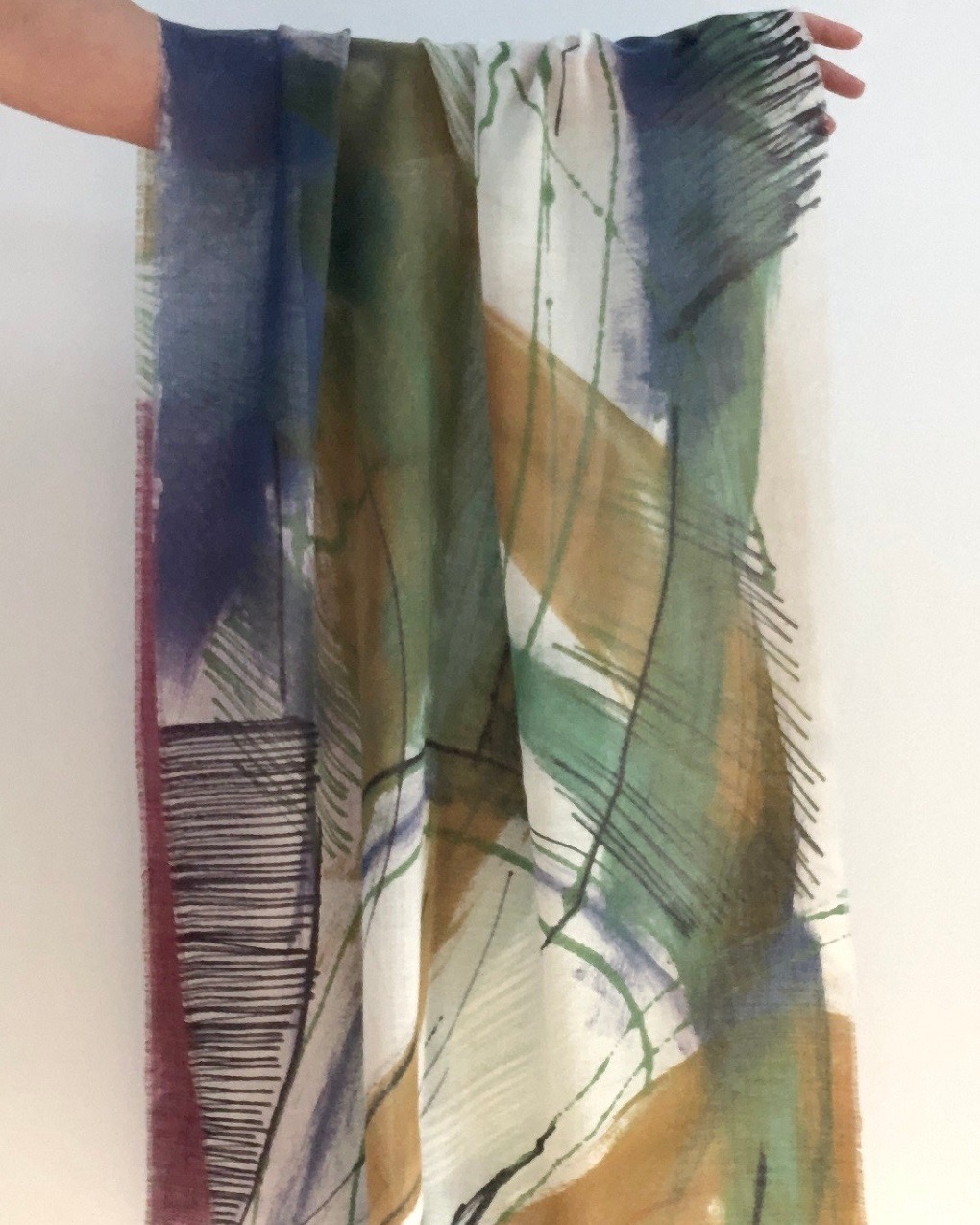
Over the years my work has changed, moved on, progressed. Some say they see the same handwriting running through my body of creative work. Moving and development is vital to me: I get bored repeating the same thing. I need to learn something from each new piece.
I guess creating art is a process of discovery for me – if I’m not learning anything then it’s time to stop.
Dionne Swift, Textile artist
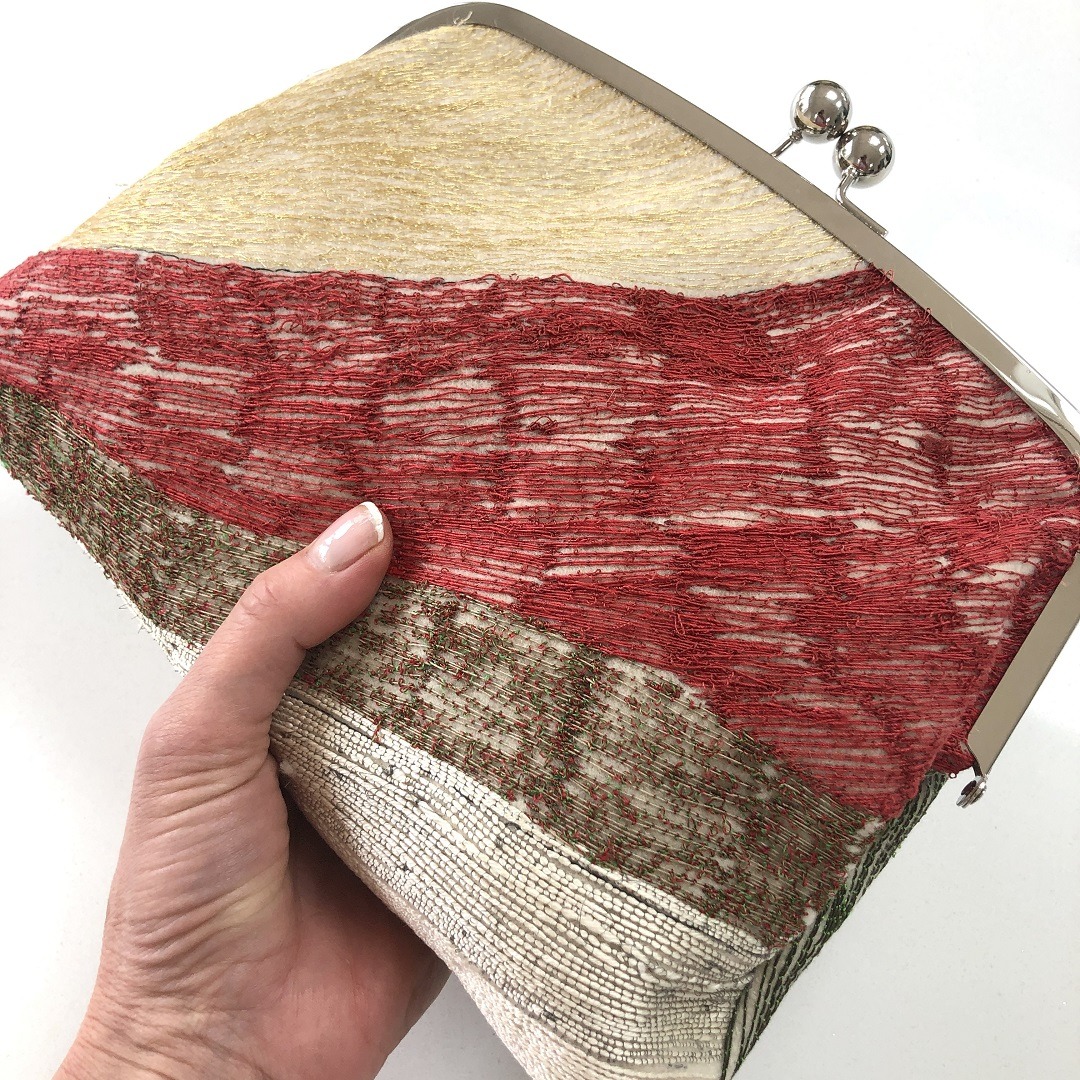
Drawing is true seeing
For me drawing is the most immediate form of investigation and discovery – I learn about my environment through observation and translation to the drawn line. I move around a lot, zipping to Italy whenever I can, and so observational drawing helps to slow me down, ground me, and helps me appreciate ‘that place at that moment’.
Drawing has become the backbone of my practice, everything hangs from this: it gives me ideas, whether it be for jewellery or for textiles. It tells me how to sew, the type of thread I should use, the direction in which to create the stitches and the tension I need.
My work would be nothing without drawing. Some days it’s the only thing I can rely on – it’s true, honest and often pretty raw.
Dionne Swift, Textile artist
Stitching can’t happen without drawing. When I sew, I’m not picking ideas out of my head, I’m using what’s in my books, on the paper in front of me. It’s constantly informing my practice and that’s what moves everything forward.
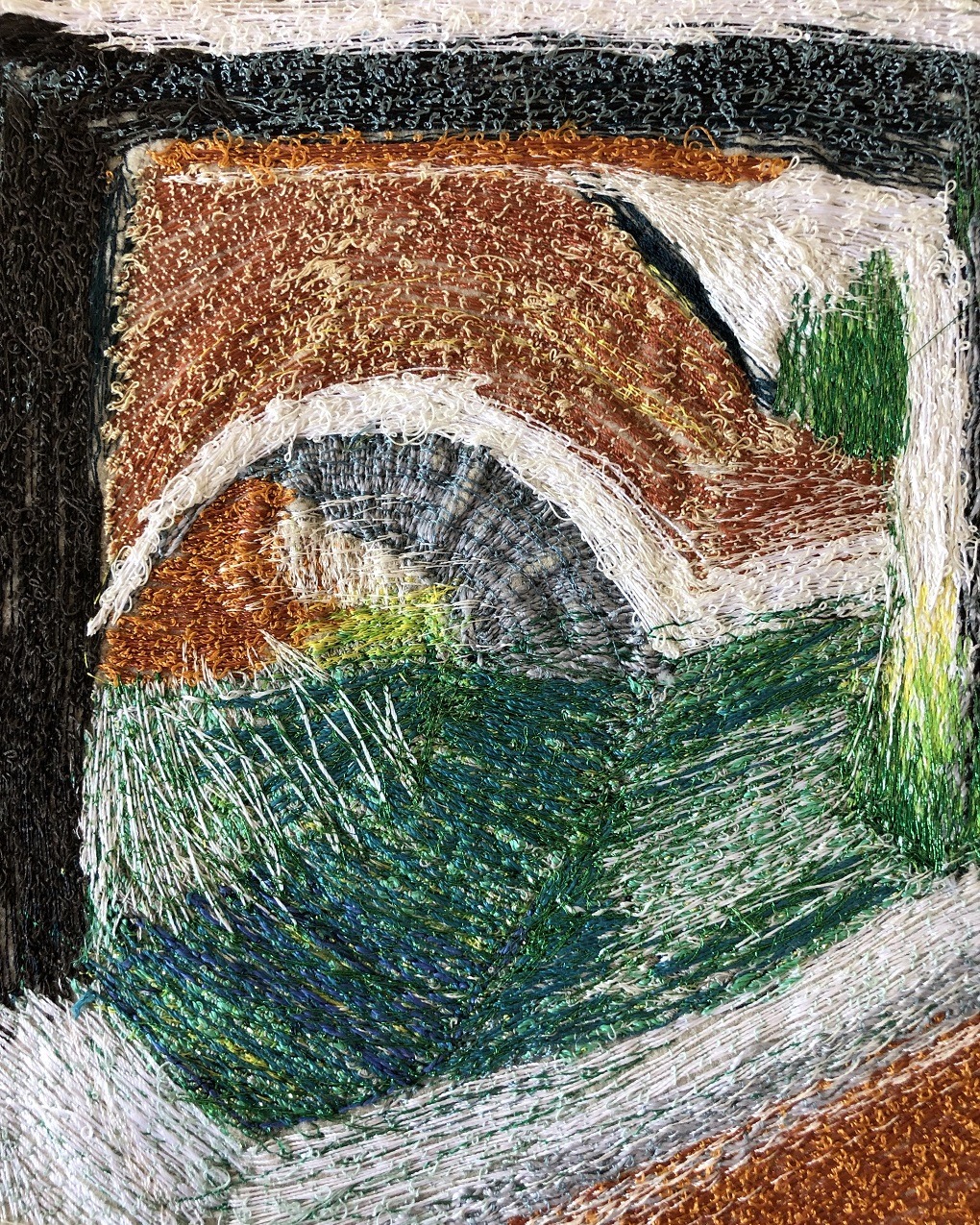
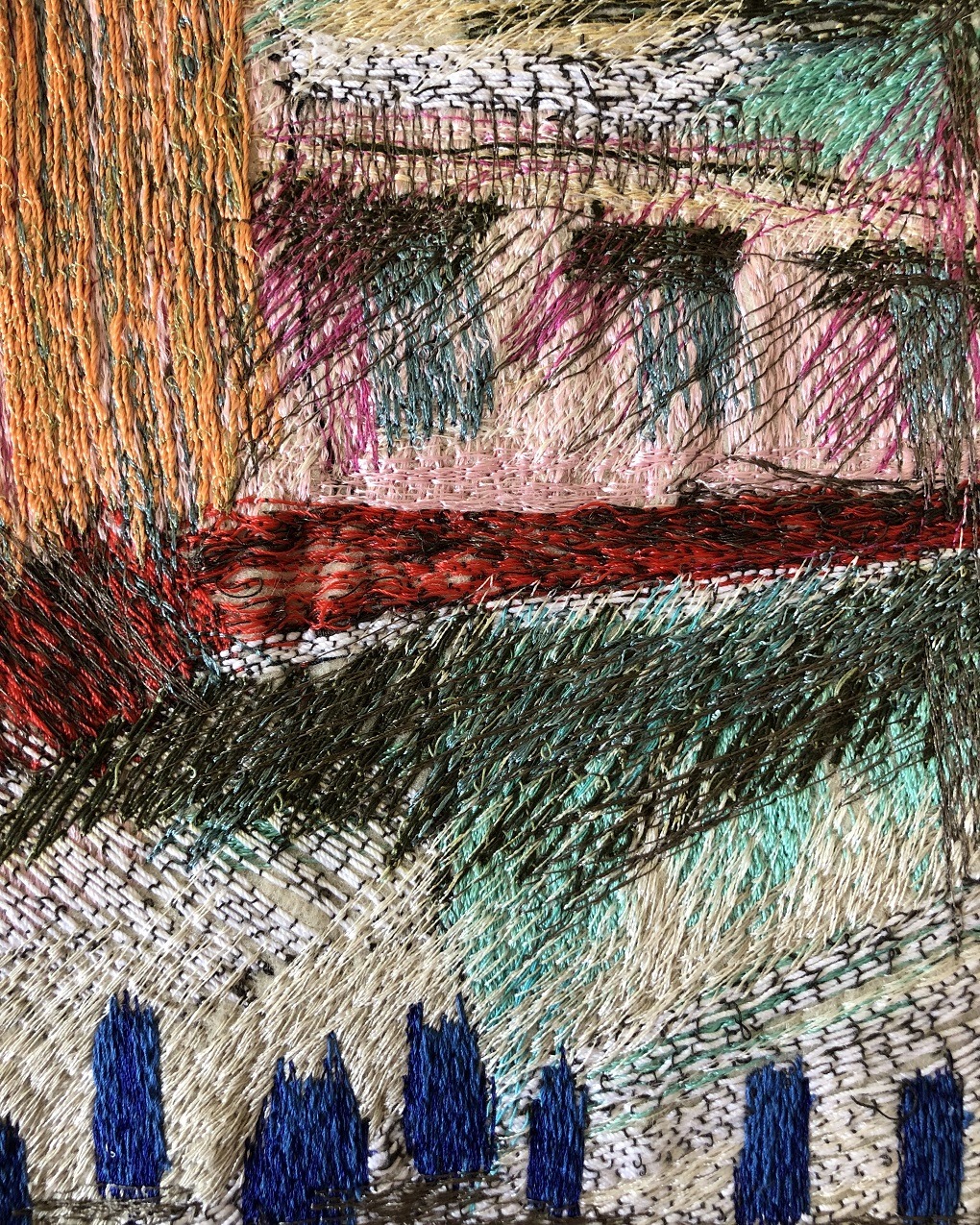
I’m against the word sketching. It’s completely different to drawing, which is a deliberate and purposeful act. If I couldn’t do anything else except one thing, it would be drawing.
When I draw, I’m looking to be the camera and capture a moment in time, in space – capture an atmosphere, capture an environment.
It’s essential to go out and draw in situ. Being in the actual place, looking at real objects makes the action of drawing more challenging. You, as the artist, have to translate the information that you see from 3D to 2D. All the decisions that your brain is making in doing that, are the things that make the work unique. If you let a camera do that, the next person can do exactly the same thing. The way that you interpret the scene, the things that you pick up on make it your own
There are odd occasions when I have to take a photograph, but the ideal scenario is to get the full experience by drawing en plein air. Then you’ve got the memory, your own story and the history related to that place.
Dionne Swift, Textile artist
People often call my work abstract, though I don’t see it as that. I’m not looking for absolute realism. It’s purely my interpretation of the way that I’ve drawn and the way that I sew on a particular day because I’m emotionally in a certain place. A camera does a good job of giving you a realistic interpretation of a subject. Therefore, when I draw, why should I try to do the same? Drawing gives it more atmosphere.
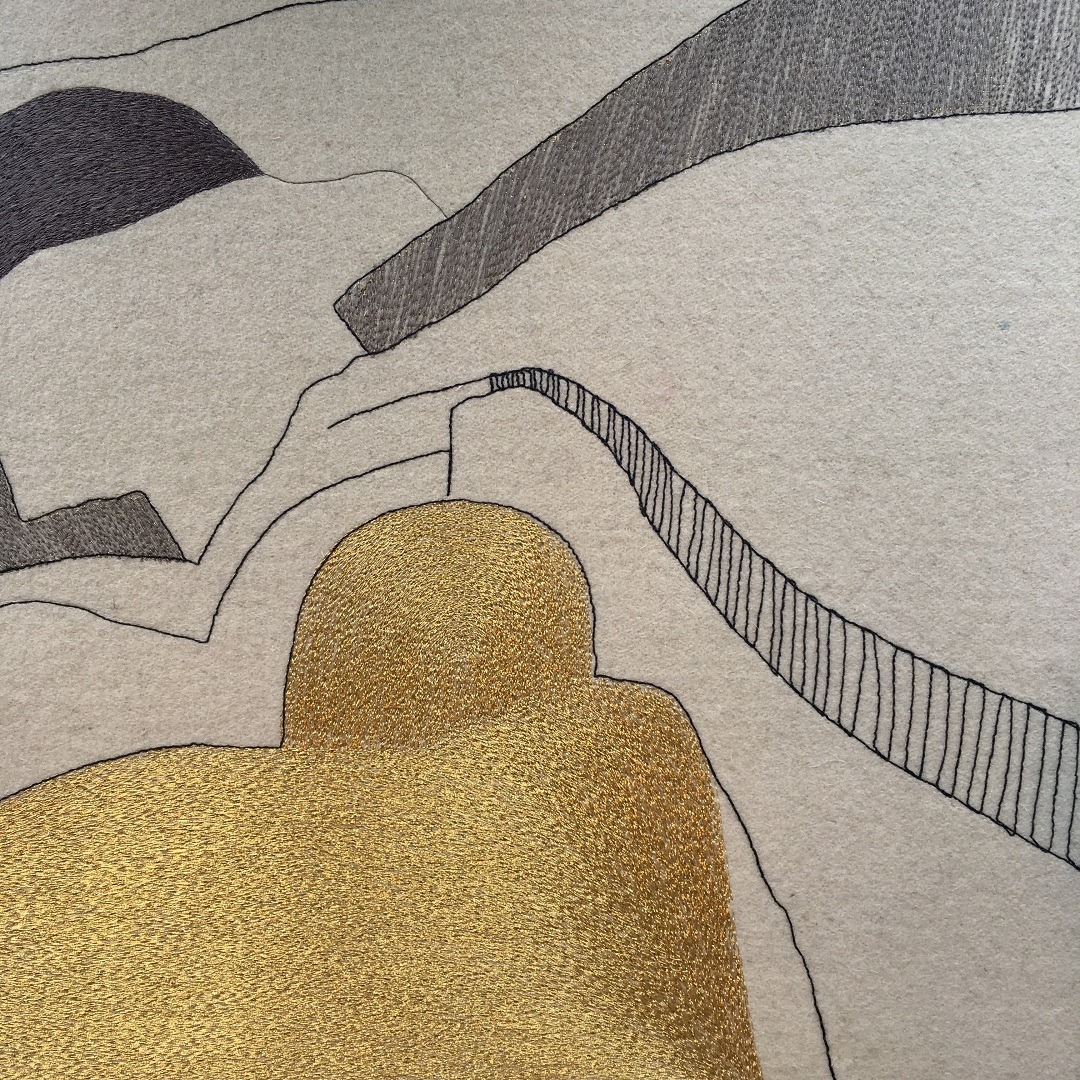
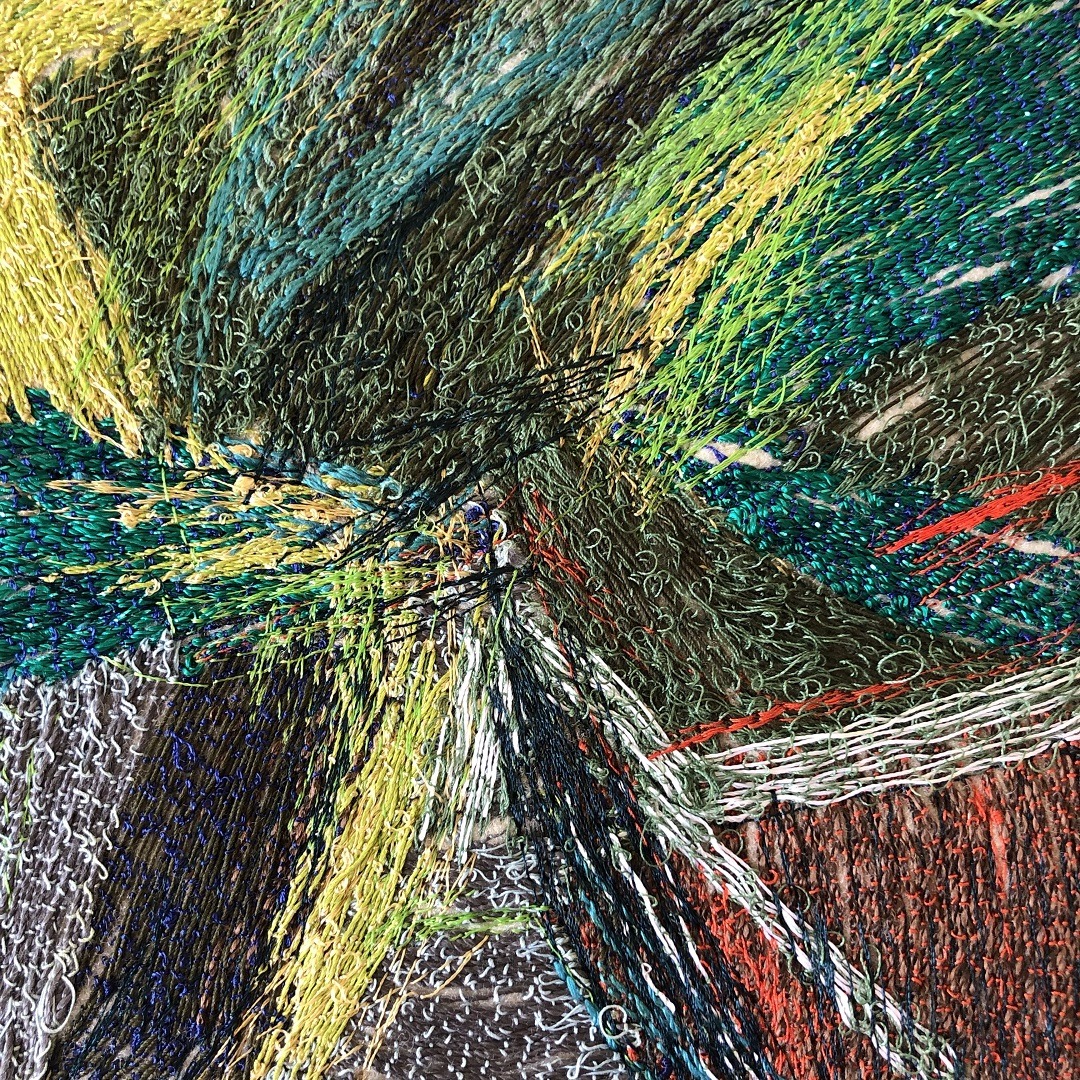
Draw to inform your stitch
I genuinely suggest everybody draws. I think there’s a real stigma people have developed over the years where, maybe at school, somebody told them they can’t draw. But, with practice, your uniqueness will come out.
Don’t do one drawing and think you can do that in stitch. Do 20 drawings and pick the best, the one that speaks to you the most. Your muscle memory created by drawing with a pen or pencil will filter through and give you more confidence when you begin your machine stitching.
Just slow down and draw, then the drawing will tell you what to do next. Nobody believes me when I tell them that because they all think drawing’s a bit boring – but really it’s the best bit.
Dionne Swift, Textile artist
Voyage of discovery
If I don’t learn through my work, there isn’t any point. I’m learning about the world, about the things around me. About the way that a leaf is formed, the intricate edge of the bark of a tree, about the shape of a landscape, about the colour of the sky, the shadows on buildings. You notice everything that you normally scan by on a daily basis without stopping to look to really understand it.
I need to look well enough to be able to put information on paper. The Impressionists would look at a scene again and again and again, and paint it again and again and again. Every day, every moment has different lighting conditions that cast on a landscape. Once, when I was painting a landscape in northern Italy, every time I looked up from my paper, the light had changed and I couldn’t keep up because of that continually moving light. As an artist that keeps me on my toes.
That’s why I find teaching so important. If I can pass on a sense of the importance of the vitality of learning and seeing, I’m leaving an incredibly valuable legacy.
Dionne Swift, Textile artist
More recently I’ve been drawn to different locations, not necessarily landscapes but cityscapes, villages, buildings, and leaves. We have an olive grove in Italy and the atmosphere underneath the trees is really interesting to me. It’s been the closest thing to me, and so that’s been the subject I’ve drawn from more recently.
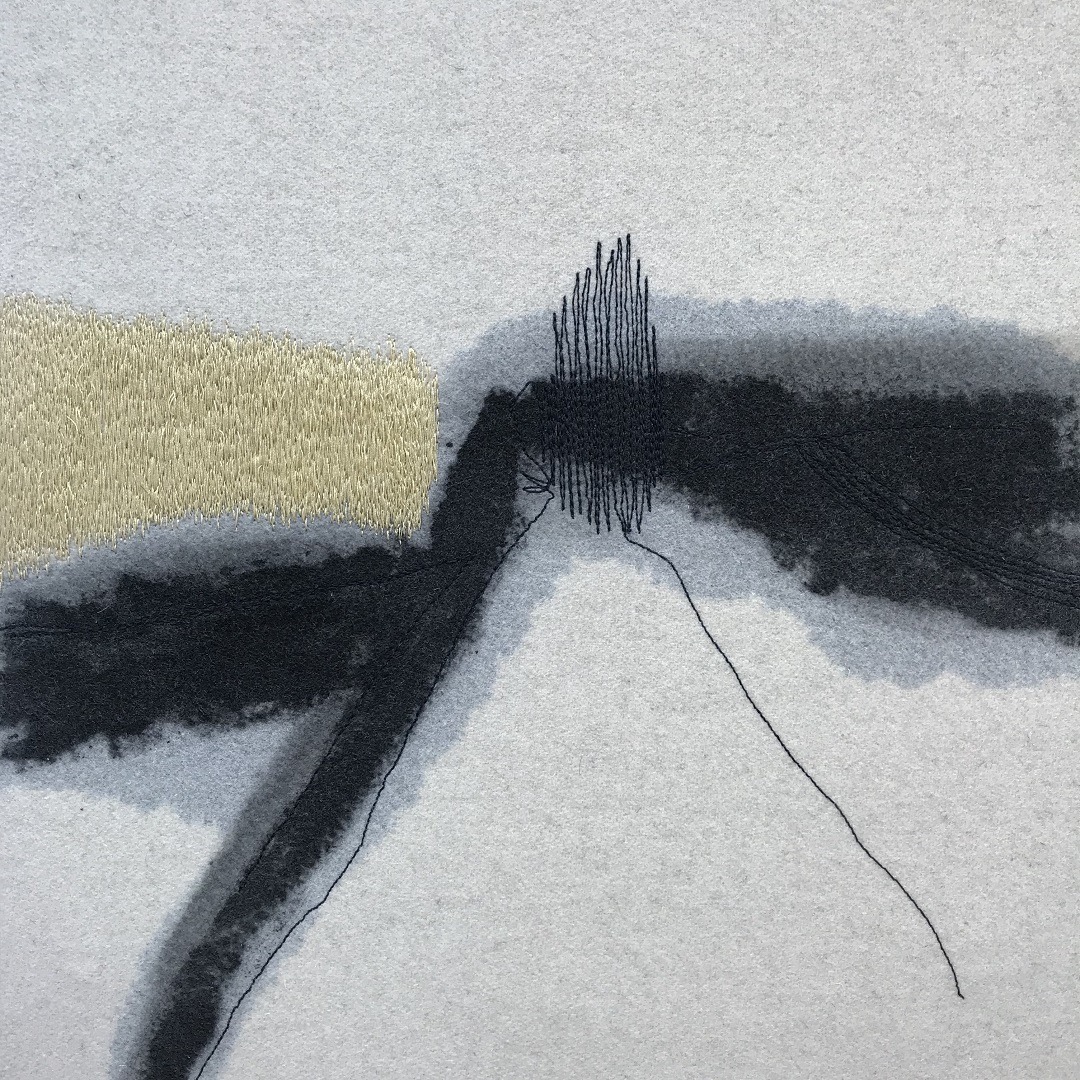
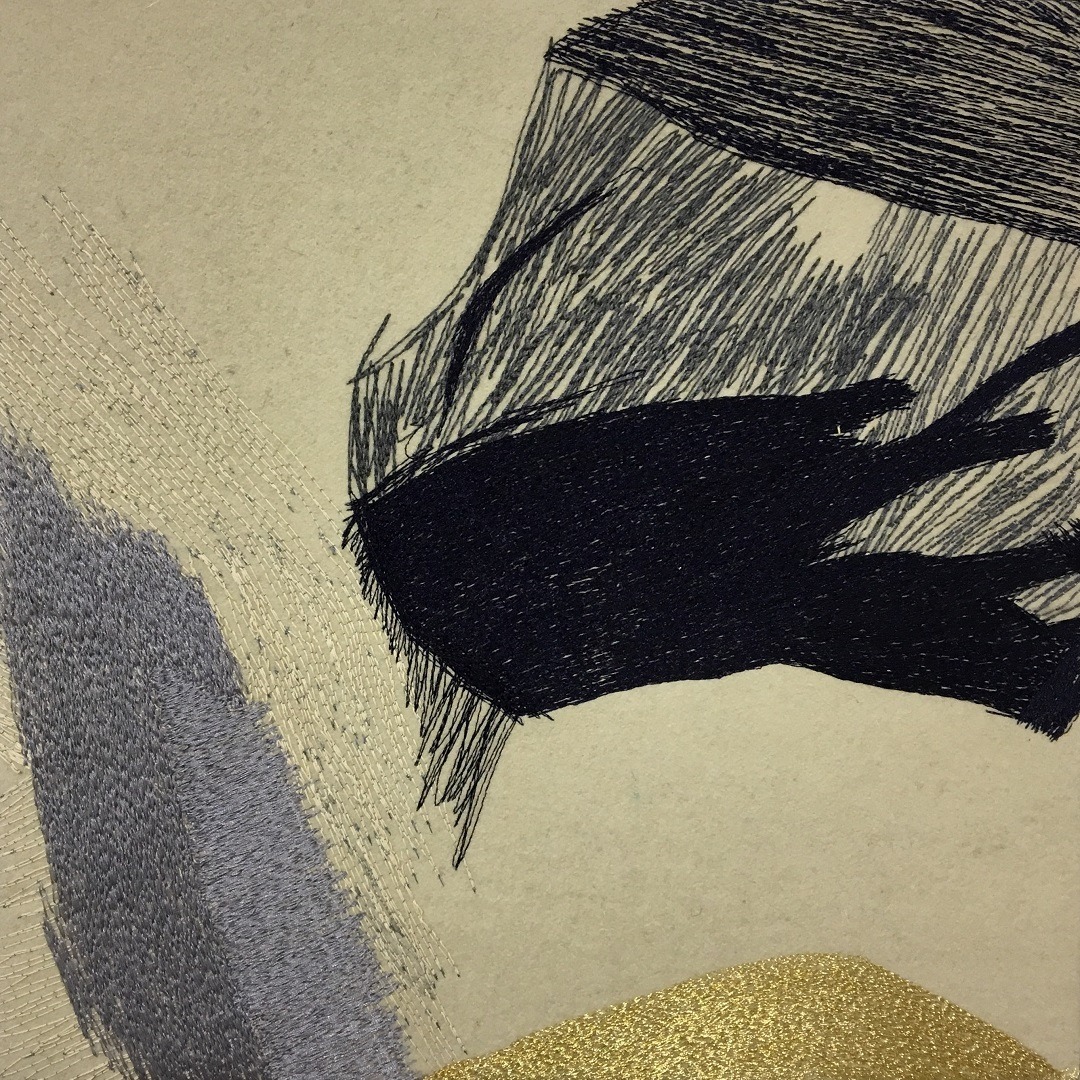
Stitching – direct, raw, vibrant
In recent years I’ve focused on working with free machine embroidery. It can be very fast paced and intense but, strangely, this can often calm me.
I sew in the same manner as I draw – it’s direct and raw. I like to build layers of stitch, much as one might with paint. The layers of thread build depth to the surface and richness to the colour and texture of a piece.
Dionne Swift, Textile artist
Working at speed is down to the beauty of my machine as much as anything else. My Janome HD9, which is a straight stitch only machine, does 1600 stitches a minute and I want to fulfil its potential. In the past, I have used an industrial machine, which did 3000-4000 stitches a minute. I can keep up with that, but there isn’t a broad range of interesting threads that can withstand that speed. My Janome MC6700 has a larger throat area and runs at 1200 stitches per minute, with the bonus of over 200 diverse stitches. I can access plenty of different threads on that.
Embroidery has traditionally had a particular characteristic of being quite slow, sedately sitting by the fire sewing contemplatively. But you can still be contemplative, meditative, and zone out by moving quickly. Some people do it by running or going to the gym where their mind floats off to other places. For me, it’s sewing at speed. If I’m filling a large area with free machine embroidery I have to go quickly or it would take me years.
Everyone does it in their own style and offers their own visual voice to the fabric and to the thread. I think I do that through the character of my marks and of my stitches, the way that I lay threads down, sometimes very smooth, sometimes very textured.
I usually work with Wonderfil and sometimes Aurifil threads. I use the full range of thread weights that I can put through the needle or in the bobbin, from 100 weight, which is very fine, to 8 weight, which is hand embroidery thread.
Though I’m no eco-warrior, I use natural materials where I can because they sound nicer when I sew. There’s a certain sweet sound when the needle pierces the cloth. Wool is my preference because it is the softest and I like it to be woven rather than felted because it’s got more stability, more hold in the warp and the weft. But equally working on calico or linen is fine, or silk – something rather heavier than habotai.
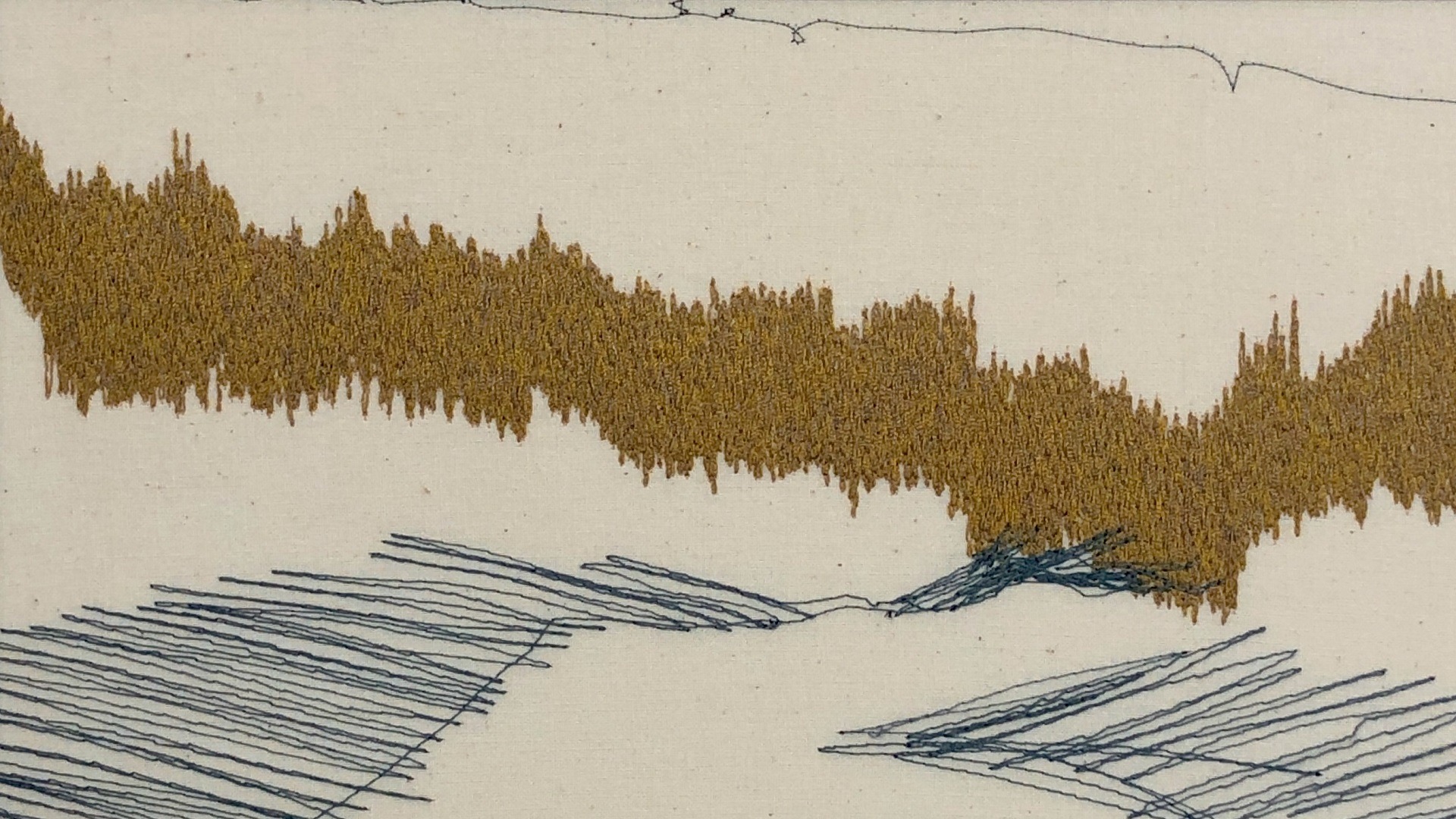
Birthday exhibition
Just before lockdown, in 2019, to celebrate turning 50 years young, I created 50 pieces – 50@50. They exhibited in my solo show Momentum at Timeless Textiles, Newcastle, Australia that same year but, unfortunately, by the time the show came to UK soil, it was closed due to lockdown restrictions.
Each stitched piece is inspired by a drawing of that year. I created far more than 50 drawings, as I always like to make more, working freely and without constraint, then select my favourites.
I explored the sights, sounds and atmosphere of all the places I visited, being pulled and attracted like a magpie to vibrant, rich and effervescent colour.
Dionne Swift, Textile artist
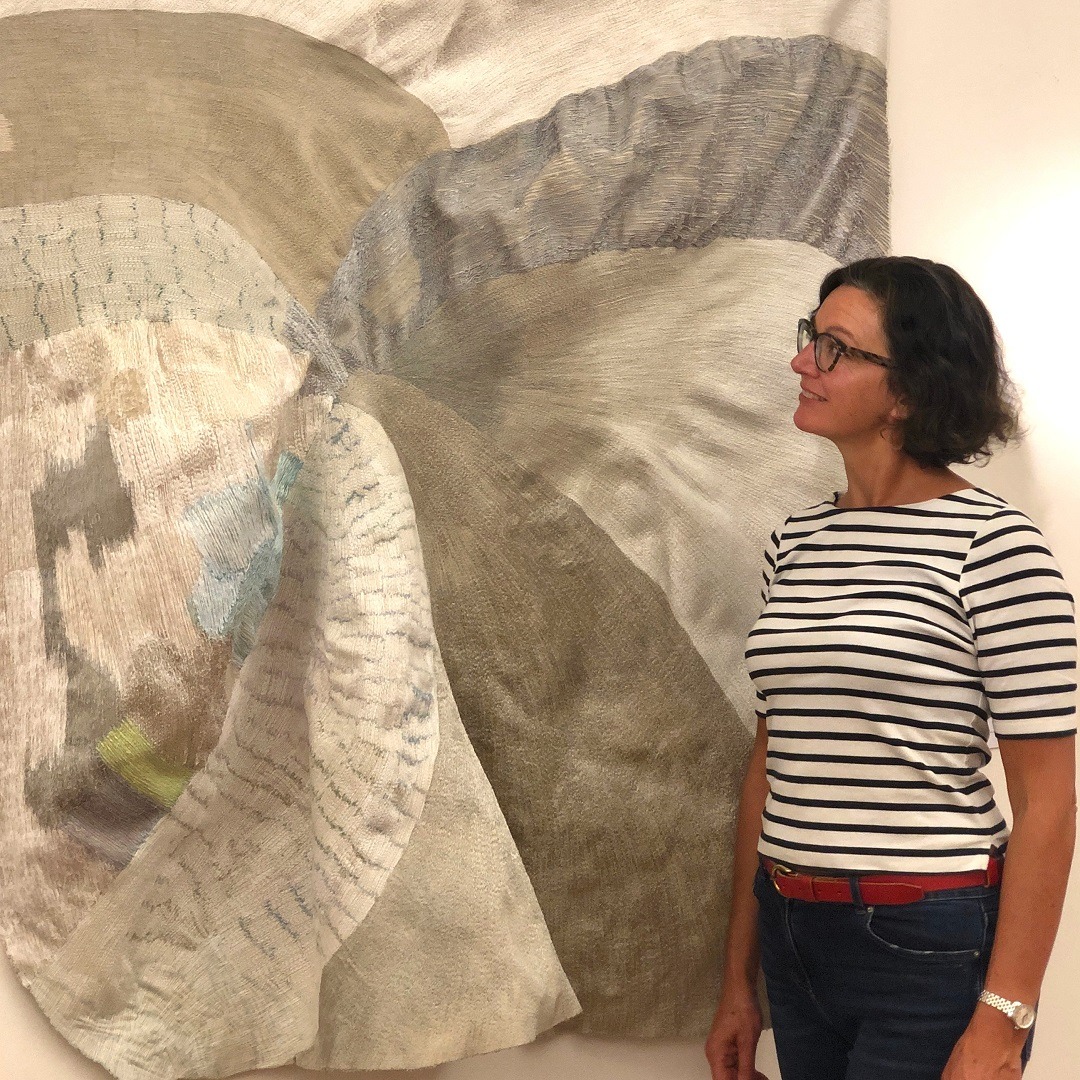
These relatively small pieces, each approximately 20-25cm, burst with colour and texture as lines of stitch criss-cross to build the composition. I’m very proud of this collection – it took dedication to create, and developing each piece moved my practice into new areas of discovery.
Intense and prolonged periods of sewing have gradually begun to take their toll on my body: shoulders, hands and arms feel each of those stitches, hence I regulate my bouts of stitchery in order to keep my body in good order. However, in 2021 after the passing of my younger brother the year before, I tackled my largest stitched work to date. My brother was a ‘bird man’ – he bred duck, geese, chickens, he loved all things feathered. My Murmuration of stitches is there to help carry him onwards. This piece was part of SEW Rome during Rome Artweek 2021 but now remains at home.
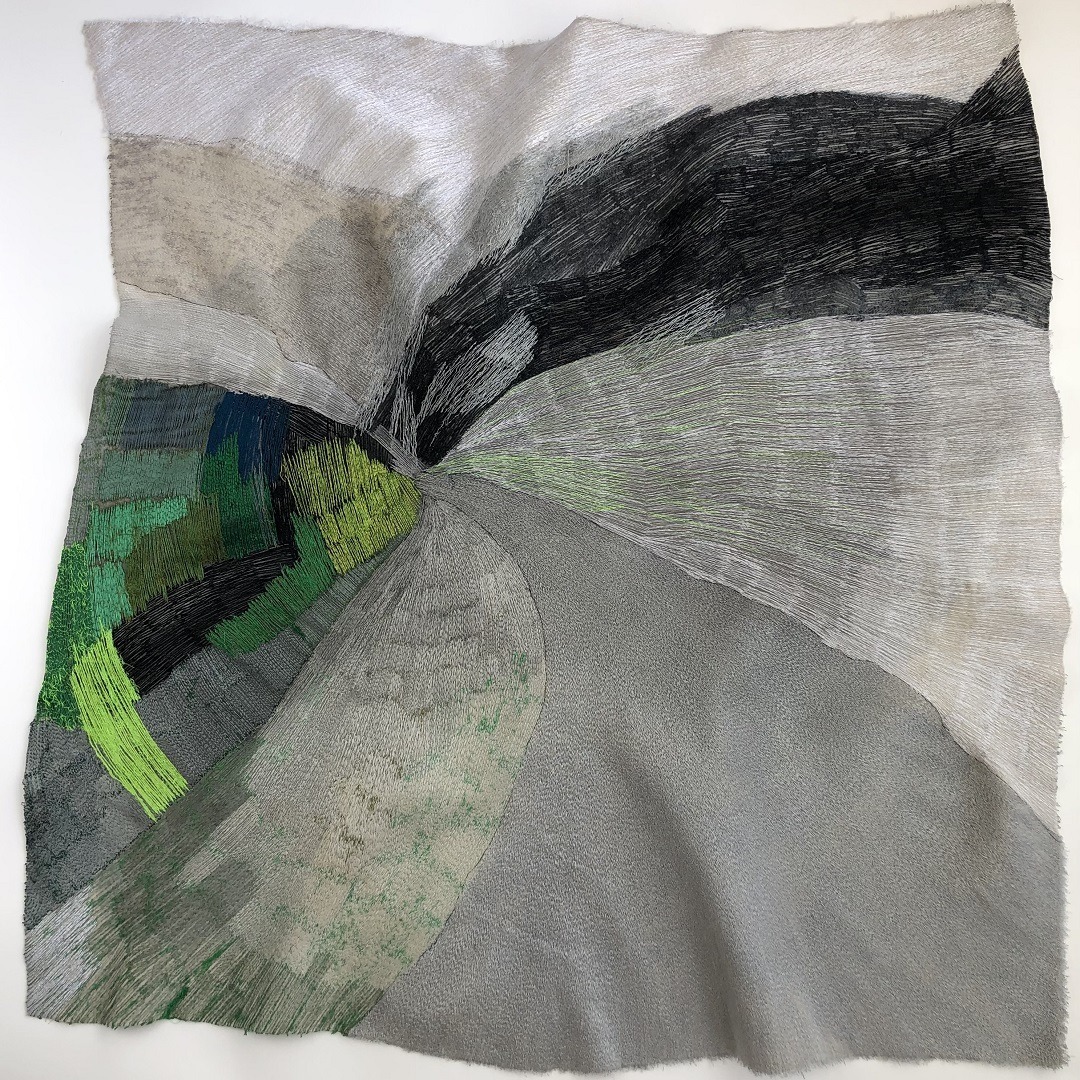
Textiles in jewellery
Recently I have been enjoying incorporating newly revived silversmithing skills into my textile repertoire. One of my early teaching roles was as head of multi-disciplinary design which led me to ceramics, metal, wood and plastics as well as textiles, so my knowledge base is broad.
Forming silver frames, I can encase my stitch and put it central stage in neck pieces and brooches.
Dionne Swift, Textile artist
I’ve been trying to avoid the excessive use of glass framing, allowing the texture of my work to be seen without a barrier. It’s better still if it can be handled and used, so bags, purses, hand painted and drawn scarves allow us all to engage more fully with that tactile surface. It’s a comforting and real sensation, retained for longer by utilising all of our senses.
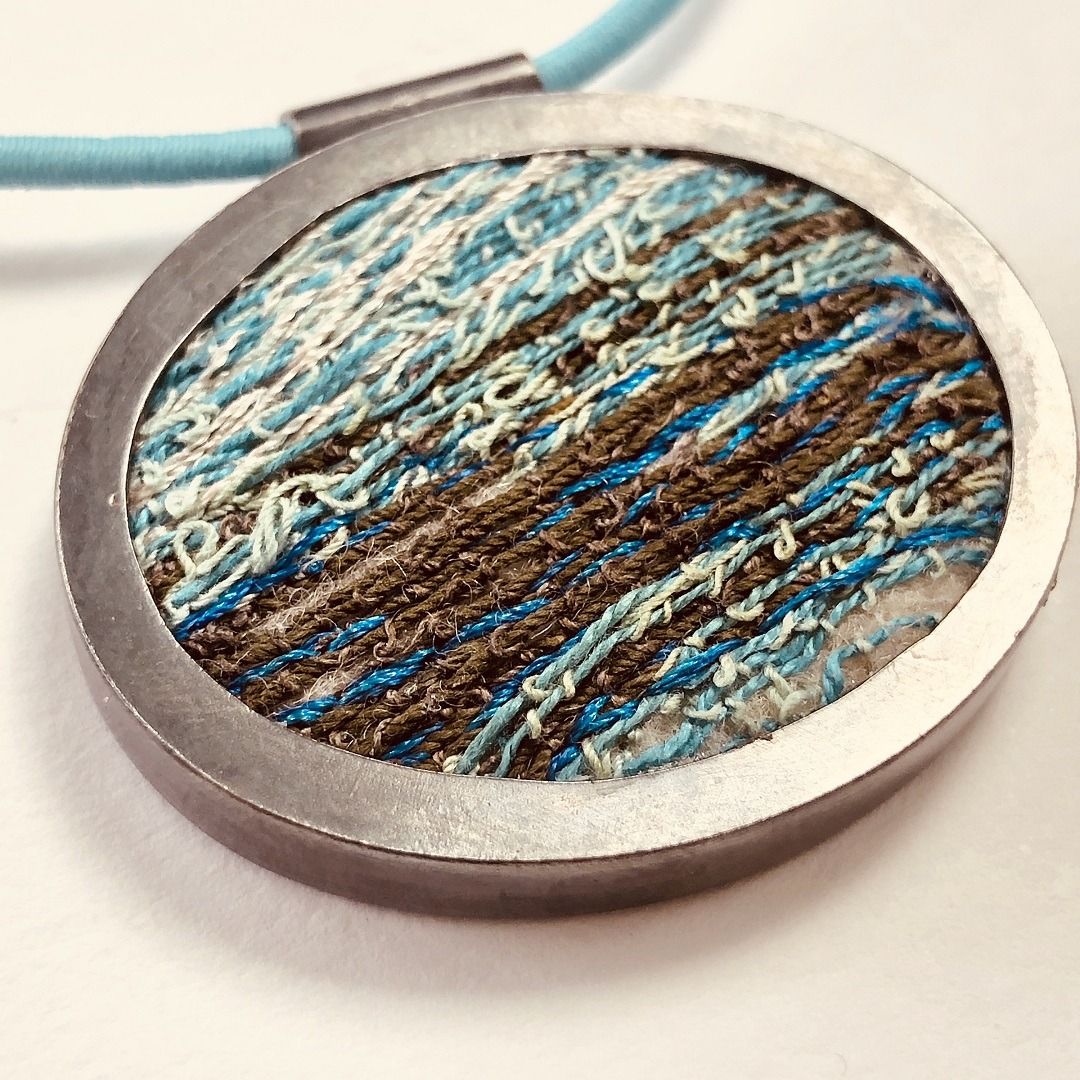
Future plans
The exhibitions I’ve got lined up will be drawings with some stitch and some jewellery, all based on the olive trees and olive grove. They’ll be at the contemporary craft shows: Made London; Blue Magpie Crafts, Shropshire; Landmark Arts Centre, Teddington; and Great Northern Contemporary Craft Fair, Manchester.
I have plans to ‘go back’ – back to that basic, raw state of drawing. It’s the start of everything, it informs my stitched line. Drawing is everything and it will tell me where to go next.
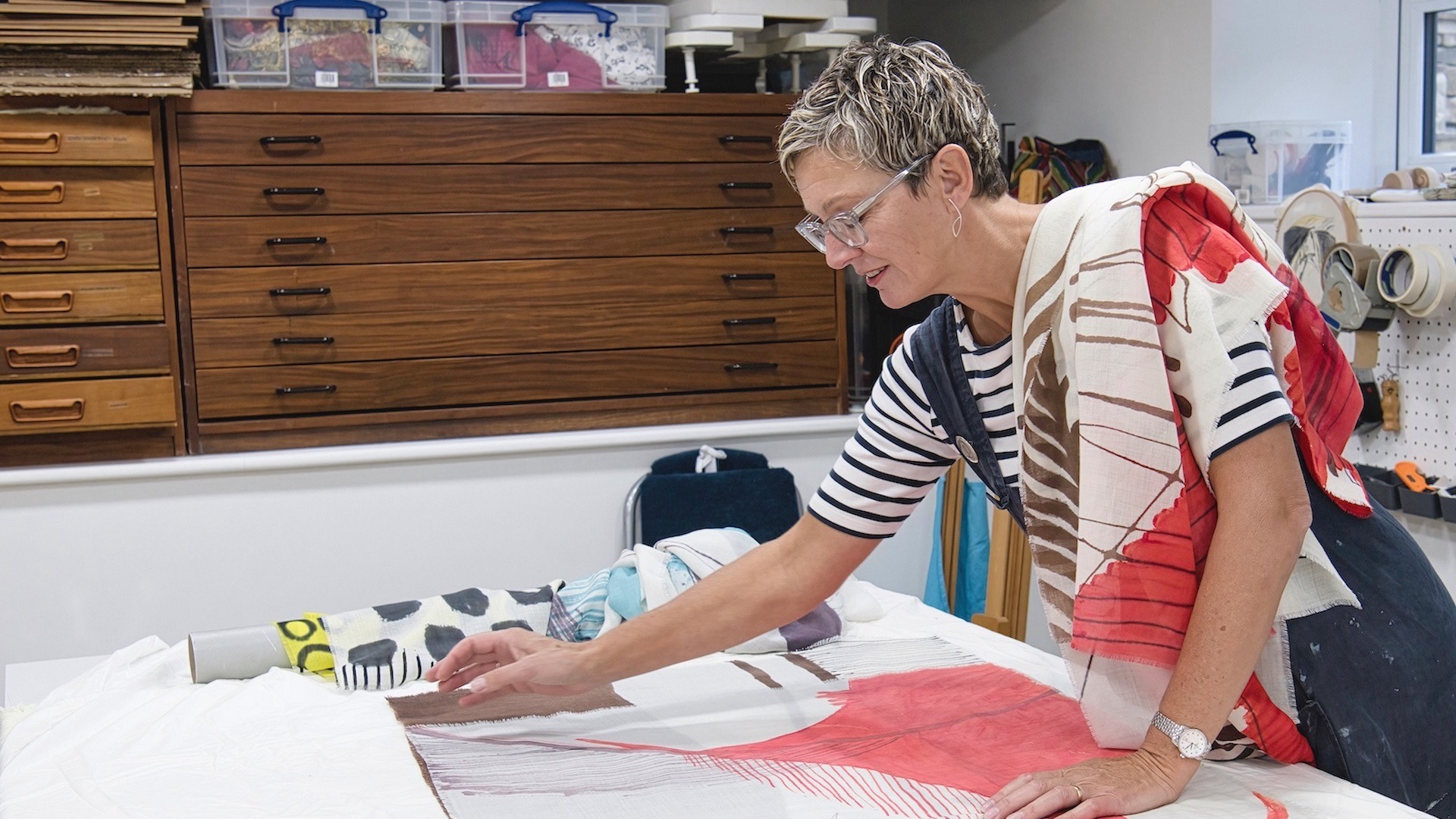
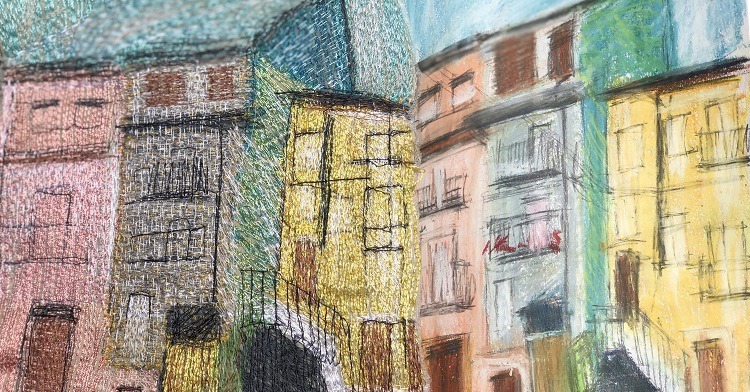

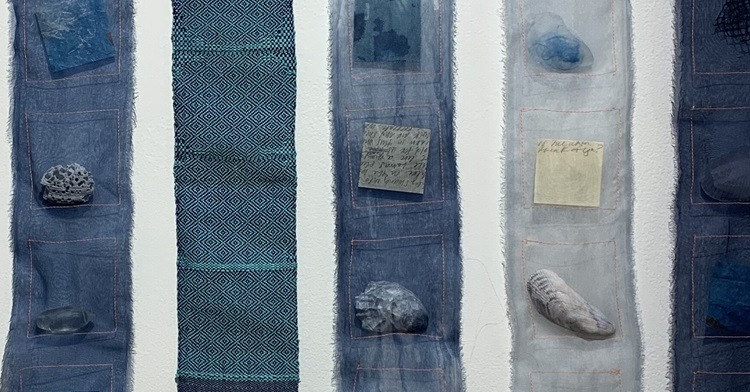
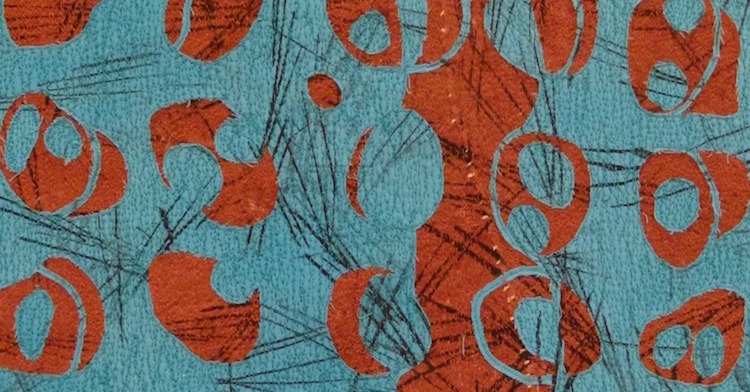
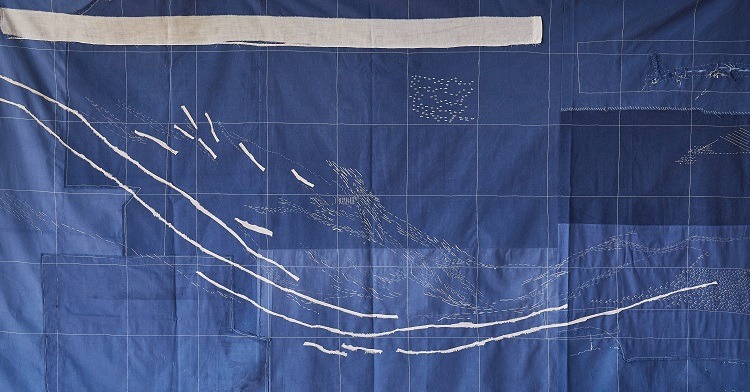
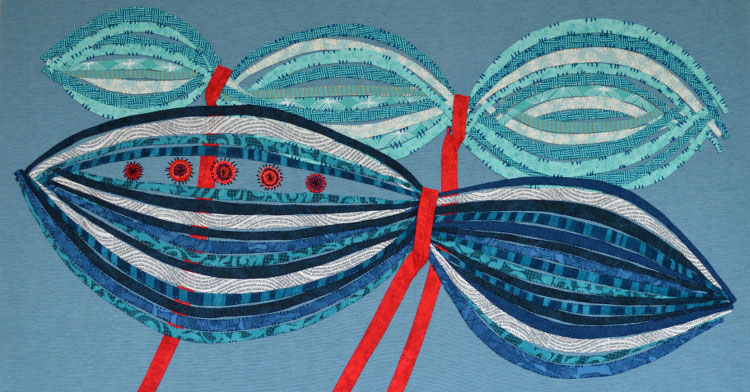
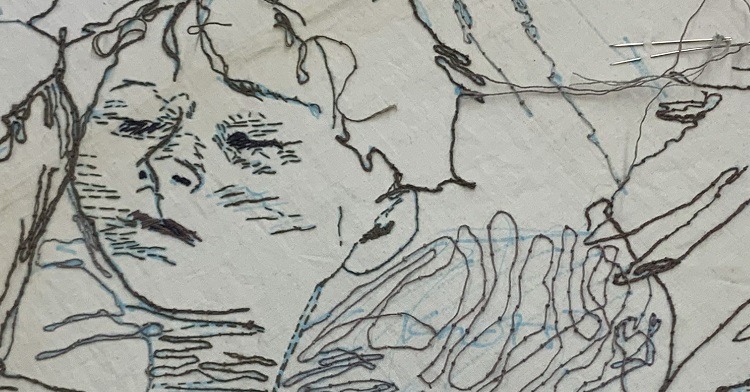
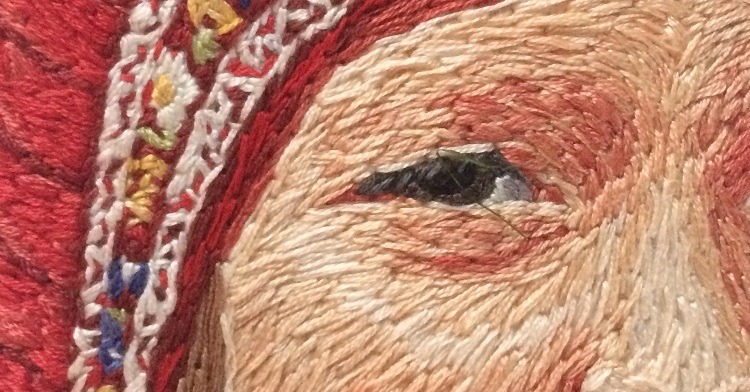
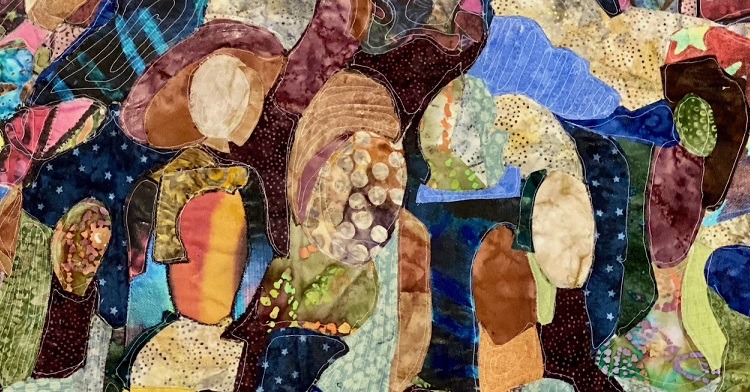
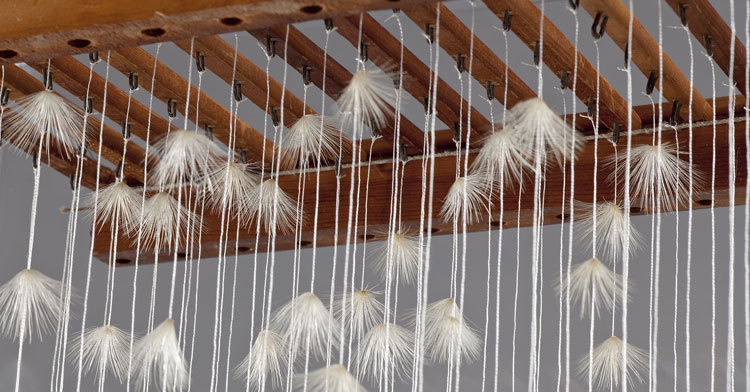
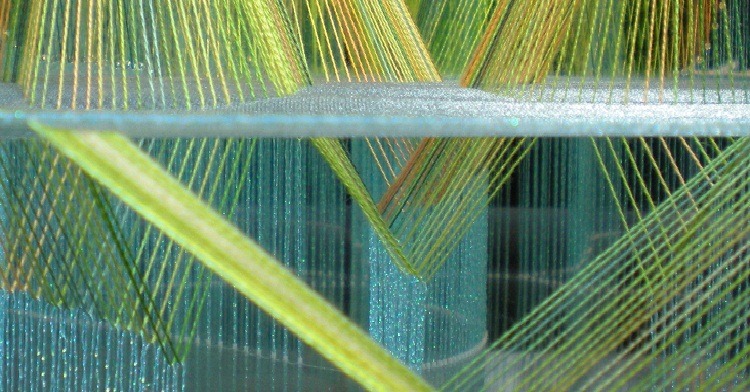

6 comments
Shawn Delker
Very inspirational to my own work! thanks for including the machine you are using, very helpful for my own practice!
Denise Elston
Beautiful and inspirational. Thank you.
Ruth Bridgman
This facinating Artist I have not seen before has really inspired me!!!!!!!
Thank you
Dionne Swift
Thank you Ruth, glad you are enjoying my work.
Regards
Dionne
Lin
A ‘new to me’ embroiderer and one I shall enjoy following on Instagram now that I have found her. Thank you.
Dionne Swift
Thank you! I’m glad to have so many new followers!